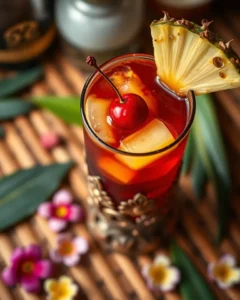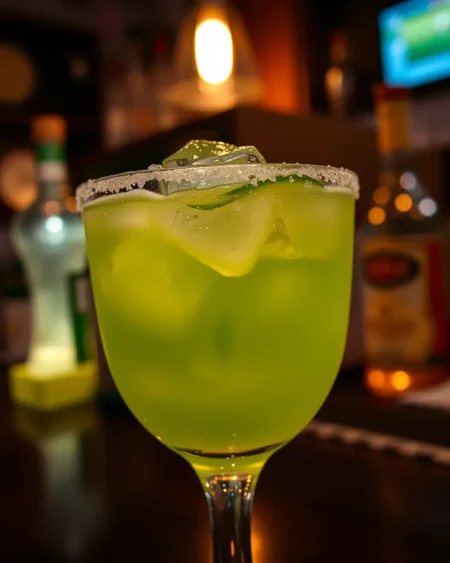The Dry Martini, a cocktail of timeless elegance and deceptive simplicity, has captivated drinkers for over a century. Its clear, crisp profile, born from the marriage of gin and dry vermouth, has become a symbol of sophistication, inspiring countless variations and endless debate. But what happens when you add a “dumped” element and a “Franklin” designation to the mix? Let’s explore the classic Dry Martini, then venture into the realm of the “Dry Martini (15:5 Dumped) Franklin” recipe.
The Anatomy of a Classic Dry Martini
At its heart, the Dry Martini is a minimalist masterpiece. The primary components are:
- Gin: The spirit provides the backbone, with London Dry style gins being the most common choice.
- Dry Vermouth: This fortified wine adds a subtle botanical complexity and softens the gin’s edge.
- Garnish: Traditionally, either a green olive or a lemon twist.
- Optional Bitters: A dash of orange bitters can add a layer of depth.
The beauty of the Dry Martini lies in its adaptability. The ratio of gin to vermouth is a matter of personal taste, ranging from a “wet” Martini (more vermouth) to an incredibly “dry” Martini (barely any vermouth at all).
The Shaken vs. Stirred Debate
Perhaps the most contentious aspect of Martini preparation is whether to shake or stir.
- Stirring: Advocates of stirring argue that it chills the drink while maintaining a smooth, silky texture and minimizing dilution.
- Shaking: Proponents of shaking believe it creates a colder, slightly more diluted Martini with a bit of aeration.
James Bond’s famous “shaken, not stirred” preference has undoubtedly fueled this debate, but ultimately, the choice is up to the individual drinker.
A Brief History of the Dry Martini
The exact origin of the Martini remains shrouded in mystery, with several competing theories. Some believe it evolved from the Martinez, a sweeter cocktail made with Old Tom gin, sweet vermouth, maraschino liqueur, and bitters. Others suggest it was named after the town of Martinez, California, or a bartender who concocted the drink at the Knickerbocker Hotel in New York City.
Regardless of its precise beginnings, the Martini gained popularity in the late 19th and early 20th centuries, gradually evolving into the drier version we know today. The emergence of London Dry gin and dry vermouth played a crucial role in this transformation, leading to the iconic Dry Martini.
The “Dry Martini (15:5 Dumped) Franklin”
The “Dry Martini (15:5 Dumped) Franklin” recipe, as featured on Difford’s Guide, presents a specific variation on the classic. Here’s a breakdown:
- 1. 5 shots (75ml) Gin: The base of the cocktail, ideally a good quality London Dry Gin.
- 2. 5 shots (25ml) Dry Vermouth: The recipe specifies that this is “dumped”, meaning the vermouth is added to the mixing glass with ice, stirred briefly, and then the excess liquid is discarded before adding the gin. This technique aims to lightly coat the ice with vermouth flavor without over diluting the cocktail.
- Dash of Orange Bitters (Optional): To add a layer of complexity and aroma.
- Garnish: A lemon twist is recommended to complement the dryness of the drink and add a citrus note.
This recipe leans towards a drier Martini due to the “dumped” vermouth technique. The 15:5 ratio emphasizes the gin’s character, while the brief exposure to vermouth-coated ice provides a subtle aromatic influence.
Why “Franklin”?
The “Franklin” in the name likely refers to Franklin & Sons, a beverage company with a history dating back to 1886. Founded by the Franklin brothers, the company is known for its mixers and commitment to using natural ingredients. However, it should be noted that Franklin Distillery Co. also produce Gin that could be used in this recipe.
While it is not explicitly stated, the “Franklin” designation may suggest using a specific gin or vermouth that pairs well with Franklin & Sons’ mixers, or perhaps a recipe created in collaboration with the brand.
The “Dumped” Technique: A Closer Look
The “dumped” vermouth technique is an interesting variation that deserves further consideration. The goal is to achieve a delicate balance of flavors, where the vermouth’s presence is felt but not overpowering.
By briefly stirring the vermouth with ice and then discarding the excess, you are essentially creating a pre-chilled, subtly infused ice that will chill and slightly dilute the gin without adding a significant amount of vermouth directly to the drink.
This technique can be particularly useful when using a high-quality gin that you want to showcase, as it allows the gin’s character to shine through while still benefiting from the vermouth’s aromatic complexity.
Crafting Your Perfect Dry Martini
Ultimately, the best Dry Martini is the one that you enjoy the most. Experiment with different gins, vermouths, and ratios to find your preferred balance. Consider these tips:
- Use high-quality ingredients: The simplicity of the Martini means that the quality of the gin and vermouth will have a significant impact on the final result.
- Chill your glassware: A chilled glass will help keep your Martini cold for longer.
- Stir or shake according to your preference: Don’t be afraid to experiment with both methods to see which you prefer.
- Consider the “dumped” vermouth technique: If you’re looking for a particularly dry Martini, this technique can be a great way to achieve a subtle vermouth flavor.
- Don’t be afraid to experiment with garnishes: While olives and lemon twists are the most traditional choices, you can also try other citrus peels, cocktail onions, or even a sprig of herbs.
The Dry Martini is a cocktail with a rich history and endless possibilities. Whether you prefer it wet or dry, shaken or stirred, with an olive or a twist, take the time to explore its nuances and discover your own perfect Martini. And perhaps, consider giving the “Dry Martini (15:5 Dumped) Franklin” a try for a unique twist on this classic cocktail.







